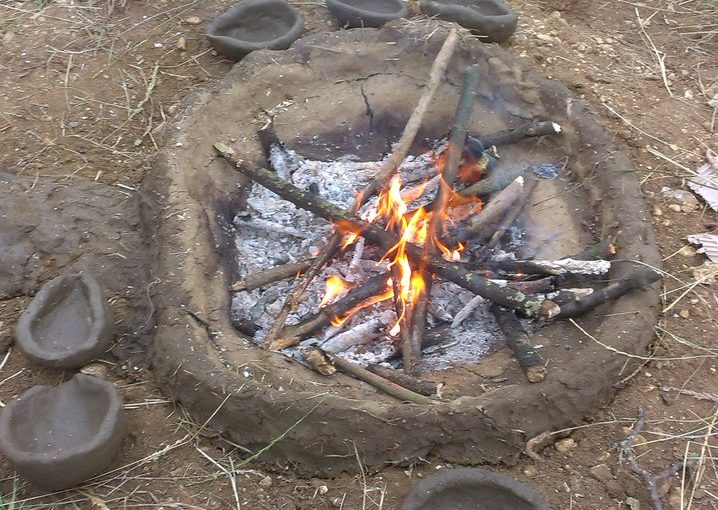In the summer of 2014 I had the pleasure to assist Dr Eleanor Blakelock in running week-long seminars in archaeometallurgy and experimental archaeology at the Sedgeford Historical and Archaeological Project (SHARP) in Norfolk. The current excavations are focused on two areas of an Anglo Saxon village, however their “primary objective is the investigation of the entire range of human settlement and land use in the Norfolk parish of Sedgeford”. The excavations have been going on since 1996, and the organisation provides comprehensive teaching in a wide area of archaeological subjects. You can read all about the project here.
The previous year SHARP began a new course in archaeometallurgy. Ellie wanted to expand the course, so I lent a hand with some of the hands-on and experimental work. We built furnaces, made moulds, crucibles, mixed alloys, and cast bronze. We even got some local ore to smelt iron. It was an intensive week and the hottest one I have ever experienced in England.
During the event, Ellie took some videos of us in action. The first one shows us building a pit furnace for casting bronze and a pit for heating the moulds. The video then follows us through the casting process.
One interesting phenomenon of the week was how we became separated from the rest of the SHARP community. We were given our own space that wouldn’t interfere with the the trenches or the campground, and was not archaeologically sensitive. The first two days when we were building furnaces we kept to the same schedule as everyone else. However, once the casting began we couldn’t stop for meals or keep to the schedule that everyone else had. One of our group would go down to the mess tent and bring back food for the rest of us. We were effectively isolated, although the others always knew where we were from the rising smoke. Later when we started showing up with freshly cast bronze jewellery there was a bit of envy and wonder. In the space of a couple days we had gone from being part of the community to the people who were “over there” with special knowledge, and who didn’t conform to the regular schedule or tasks that everyone else did. We kept odd hours, were continually covered in soot, but had become somewhat wizard-like in our knowledge of metalworking (not to mention regularly getting out of kitchen chores!).
On the final evening, everyone joined us for the iron smelt. The week had been intensely hot so we started stoking the bloomery furnace in the late afternoon, after the heat of the day. As the sun set and most folks had finished their supper, they came by to see the furnace in full swing with fire shooting from the top. Of course everyone wanted to take a turn at the bellows. It was a magical evening. Stories were told, and mysteries presented. The people who worked on the furnace and participated in the smelt had a new appreciation for the process of making iron. The archaeologists also had a more rounded knowledge of what a smelting site could have looked like, including the resources needed for smelting iron, and the physical space that people would have inhabited while at work. It was past 1 AM when we finally called it quits for the night and let the furnace cool.
In a way the course was an initiatory experience for the archaeologists who participated in the event. It was hard work, but they learned the secret knowledge of the smiths and have stories and their bronze castings to prove it. They also gained a well-rounded introduction to archaeometallurgy that included both theory and practice.
I have been back to help run the course and plan to be there again this summer. The course will run again this July. If you’re interested in learning more about the course or being part of the excavation please sign up on the SHARP website.
